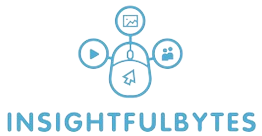Great automations don’t feel clever—they feel boringly reliable. The best Shortcuts on iPhone, iPad, and Mac are the ones that run the same way every day, across devices, without surprising you or demanding taps. The trick is to design around your routine: trigger by time, tag, or place; keep inputs simple; favor native apps that sync; and add small guardrails so a hiccup never derails you. Do it once and your notes file themselves, your phone shifts modes by context, and the busywork you used to do by hand quietly disappears.
Start with triggers that match how you live: time, place, tag

Begin by mapping the moments that already repeat. Time is the most reliable: a morning prep at 08:30, a midday reset at 12:55, an evening wrap at 18:00. Place is next: arriving at the office or gym, leaving home, tapping an NFC sticker at your desk. Tags round it out: adding #task or #expense to a note or reminder so it lands where it belongs. In the Shortcuts app, create Automations for “Time of Day,” “Arrive/Leave,” “NFC,” “Open App,” “Charger,” or “Battery Level.” Where iOS and iPadOS allow it, disable Ask Before Running so routine actions fire hands-free. Use focus modes as meta-triggers: switching to a Work focus can cue Wi-Fi calling, lower ringer volume, open your daily notes, and set your status in one move. The goal is to let context, not tapping, drive behavior.
Build a capture pipeline that files itself with tags
Capture succeeds when it’s one gesture and zero decisions. Make a single “Quick Capture” shortcut and surface it everywhere—Home Screen, Share Sheet, Back Tap, Apple Watch. It should grab whatever you’re holding (selected text, a photo, a link, dictated idea), add a timestamp, and save to a predictable inbox: a Notes note titled “📥 Inbox – Today” or a dated Reminders list. Add an optional tag picker (#idea, #call, #errand) so the same shortcut can route later. Then create a second, scheduled shortcut—“File Today”—that runs at night. It scans the inbox for tags and appends each item into the right destination: #idea into a rolling “Ideas” note, #call into “Calls to Make,” #expense into a monthly expenses note or folder in Files. Notes and Reminders both support tags and Smart Folders; that means you can browse by context without moving anything manually. The pattern is simple: one place to dump, one nightly job to sort. It survives busy days because it never asks you to think.
Make your device change modes automatically—without killing convenience
Mode switches should be felt, not seen. Create an Arrive at Work automation that sets your Focus to Work, turns on Wi-Fi Calling if reception is weak, lowers ringer to 20%, enables a low haptic level, and opens your dashboard note. Pair it with a Leave Work automation that restores your default focus, ringer, and volume, and starts an end-of-day playlist. Use Charger as a reliable anchor: when you plug in at night, kick off “File Today,” trigger app updates, and queue Photos backup—jobs that are best on Wi-Fi and power. In the morning, a Time of Day automation can switch the theme to light, set brightness to a sensible floor, enable your commute focus, and read the first calendar block. Keep these bundles small and reversible: one shortcut to enter a scene, one to exit. If a step fails (say, you’re not on Wi-Fi), the rest should still help—no single point of failure.
Turn the Share Sheet into a filing station for scans, receipts, and links
You touch more content in the Share Sheet than anywhere else; make it do the filing. Create a “File Receipt” shortcut that uses Scan Documents, renames the PDF as YYYY-MM-DD_vendor_amount.pdf, saves it to /Files/Finance/YYYY-MM, and appends a line to your “Expenses – Month” note with the same metadata. Build “Save to Reading Log” to capture a URL, page title, and quote into a dated “Reading” note and add the link to a Safari Reading List or a “To Read” Reminders list tagged #read. For photos, “Send to Project” can resize, add a standard watermark or caption, and save into the relevant project folder in iCloud Drive, tagging the note entry with the project ID. Because these run from any app, the workflow survives app churn; the structure is yours, not the app’s.
Make automations robust: idempotent design, tiny logs, and safe prompts
Shortcuts feel “fragile” when they assume perfect conditions. Add guardrails so running twice does the right thing. Before creating today’s note, find one with today’s date; if it exists, append instead of creating. When saving a file, check if a name exists; if so, add a suffix like -2 rather than overwriting quietly. Prefer “If” checks over hard failures: if Wi-Fi isn’t available, queue the action by adding an entry to a small “To Run When Online” note; your nightly job can sweep those up. Keep a one-line log: after a shortcut runs, append a timestamped summary to “Automation Log” so you can confirm that “File Today” handled 7 items at 22:05. For actions that can surprise—like sending a message or deleting temp files—use “Ask Each Time” on the final step or show a preview first. And test with real-world inputs: long titles, empty clipboards, no network, locked screen. A minute of pessimistic testing buys months of reliability.
Make invocation effortless: Siri phrases, Back Tap, widgets, and Watch
Speed comes from not hunting for the right button. Record a Siri phrase that you’ll actually say—“drop a note,” “send to project,” “log reading”—and restrict activation to a quiet room if you share walls. Place a Small Shortcuts widget on the first Home screen with your three most-used shortcuts and a Medium widget on a second screen for weekly tools. Map Back Tap (Settings → Accessibility → Touch) to run “Quick Capture” with a double-tap and “Scan Receipt” with a triple-tap so you can add things one-handed. On Apple Watch, keep one complication as “Run Shortcut” pointing at “Voice Inbox”—lift, dictate, done. On Mac, place menu bar shortcuts for “Start Focus Session,” “Create Daily Note,” and “File Clipboard,” and assign keyboard shortcuts in the Shortcuts app. The less you navigate, the more you’ll use the system—and the more value you’ll get out of the same few automations.
Maintain lightly: audit monthly, back up your work, and respect privacy

A system that survives daily use needs a bit of care. Once a month, open Shortcuts and sort by Last Modified. Delete experiments, archive old versions by exporting them to iCloud Drive, and share a backup link to yourself so you can resurrect a known-good build after a mistake. Skim your Automation Log for failures or slow steps you can simplify. Review any automations that Bypass Confirmation and make sure you still want them hands-free. In Notes and Files, prune the inboxes your nightly job empties; they should be small if the filing pass works. Finally, keep sensitive flows on device. Prefer Apple’s native actions (Notes, Reminders, Calendar, Files, Focus, Low Power Mode) over third-party web hooks for anything personal. If you do call external services, gate them with a prompt and sanitize what you send. Reliability isn’t just “does it run”; it’s “do I trust it to run unsupervised.”

